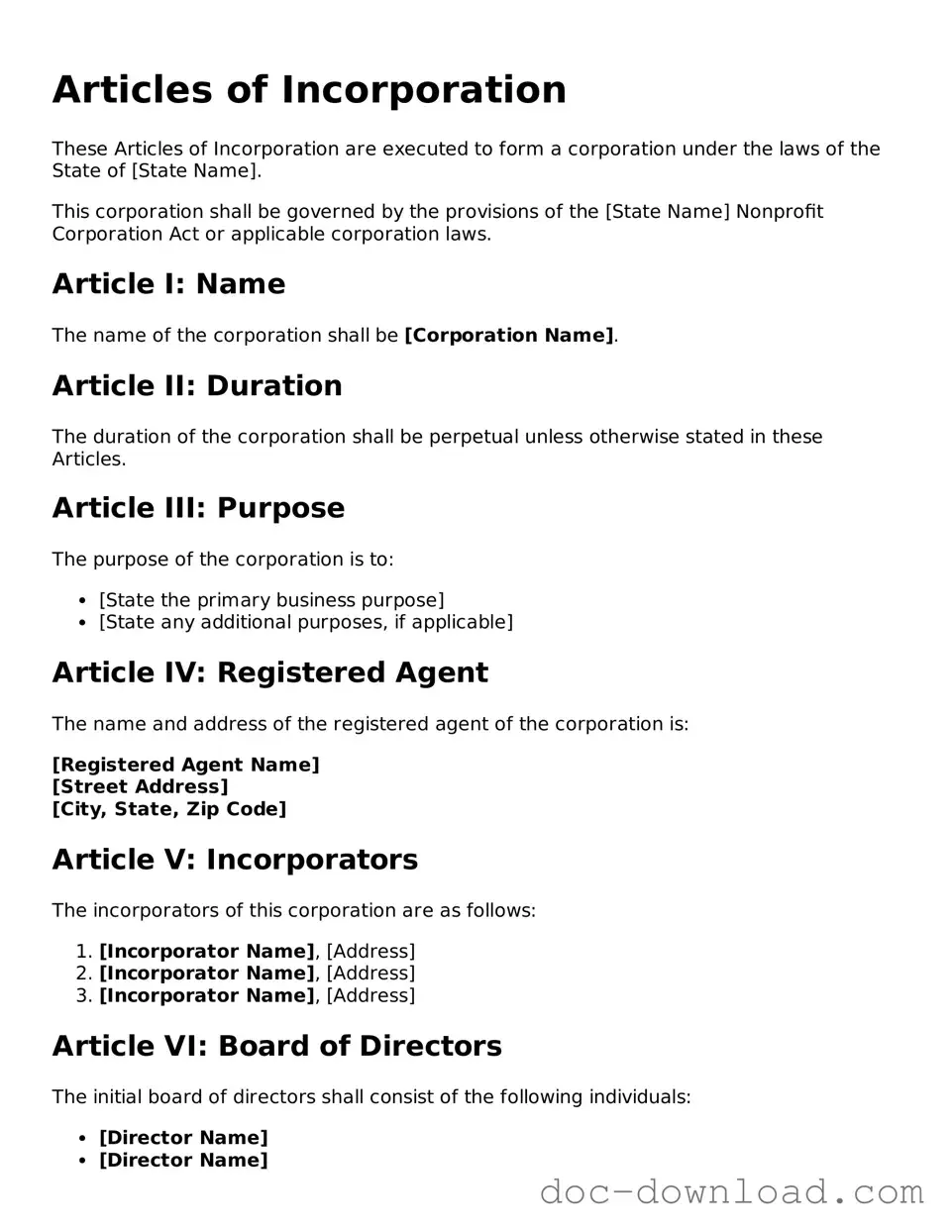The Articles of Incorporation form is often compared to the Certificate of Formation. Both documents serve as foundational legal filings that establish a corporation's existence. While the Articles of Incorporation outline the basic structure, purpose, and governance of the corporation, the Certificate of Formation may include similar information but is often used interchangeably in certain jurisdictions. It provides essential details such as the corporation's name, registered agent, and the duration of existence, ensuring that the entity is recognized by the state.
Another document that shares similarities is the Bylaws. While the Articles of Incorporation lay out the framework for the corporation, the Bylaws delve into the internal rules and procedures that govern the corporation's operations. This document outlines how meetings are conducted, how officers are appointed, and the rights of shareholders. Both documents are essential for establishing a corporation, but they focus on different aspects of its structure and management.
The Operating Agreement is also comparable to the Articles of Incorporation, especially for Limited Liability Companies (LLCs). This document serves as a contract among the members of the LLC, detailing how the business will be run, the responsibilities of each member, and how profits will be distributed. Like the Articles of Incorporation, the Operating Agreement is crucial for defining the entity's structure and operational guidelines, though it is tailored specifically for LLCs.
Next, we have the Partnership Agreement, which is similar in that it establishes a business entity but is specific to partnerships. This document outlines the terms of the partnership, including profit sharing, decision-making processes, and responsibilities of each partner. While the Articles of Incorporation create a corporation, the Partnership Agreement creates a partnership, but both serve to define the relationships and expectations of the parties involved.
In the realm of legal documentation for business operations, understanding the nuances of various forms is crucial; for instance, the Colorado PDF Forms play a significant role in aiding individuals to designate authority in managing their financial affairs. Just as the Articles of Incorporation lays the groundwork for corporate structure, these PDF forms ensure that one’s wishes are honored even in times of incapacity, creating a safety net for managing personal and financial matters effectively.
The Certificate of Good Standing is another important document that complements the Articles of Incorporation. This certificate proves that a corporation is legally registered and compliant with state regulations. While the Articles of Incorporation initiate the formation of a corporation, the Certificate of Good Standing is a testament to its ongoing compliance and legitimacy, often required for business transactions and loans.
The Statement of Information is also relevant, particularly in states that require it shortly after filing the Articles of Incorporation. This document provides updated information about the corporation, such as the names and addresses of its officers and directors. It ensures that the state has current information about the corporation, reinforcing transparency and accountability in corporate governance.
Lastly, the IRS Form SS-4, which is used to apply for an Employer Identification Number (EIN), is essential for any corporation. While the Articles of Incorporation establish the corporation, the EIN is necessary for tax purposes and to open a business bank account. Both documents are vital for the legal operation of a corporation, and obtaining an EIN is a critical next step after filing the Articles of Incorporation.
